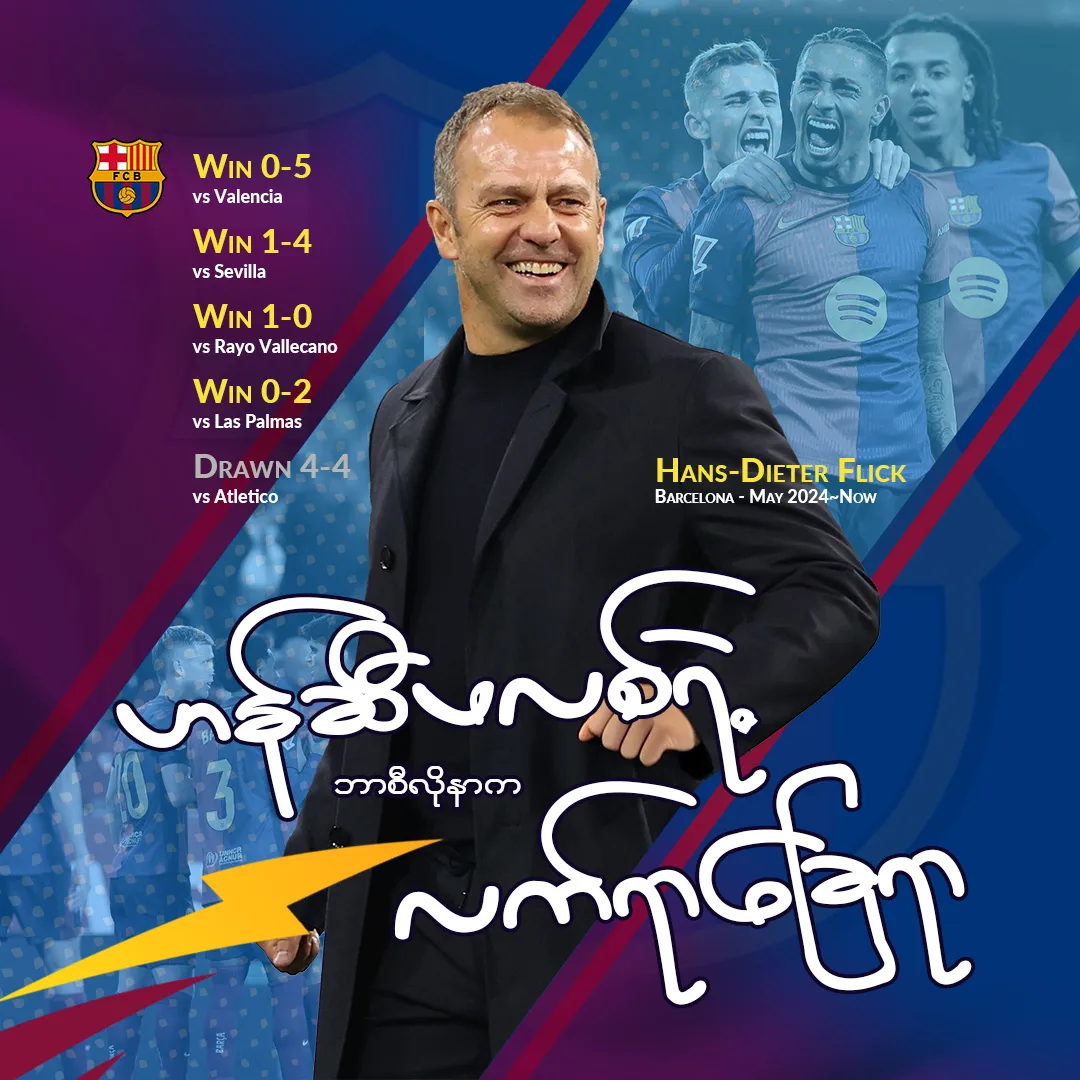Barcelona follow Hansi Flick’s footsteps
It’s true that there were some who were surprised when Hansi Flick became Barcelona coach. Barcelona have been a team that has, in recent years, employed, if not Spanish, then Dutch players and stuck to their traditional tiki taka style. So what will happen to Barcelona’s tiki taka when Hansi Flick takes over from a German coach and a man who prefers a direct style of play? The question has been raised whether Hansi Flick will play tiki taka, or whether Barcelona will break away from tiki taka.
Tiki taka, a style of play that involves players moving in close and short passes, has long been a staple of the Spanish national team. It was especially common in the years when Barcelona players were the mainstay of the Spanish national team. However, at the last Euros, Del Lafonte’s Spain took a different approach and broke away from the traditional Spanish style.
Similarly, Hansi Flick has introduced a more diverse style of play to Barcelona, combining a German-style direct style with Spanish-style tiki-taka. Especially since tiki-taka and Barcelona have been around for a while, La Liga rivals and European rivals have understood the rules of tiki-taka and are more likely to block them, so it was inevitable that Barcelona would have to make changes when their results started to deteriorate in the following years.
In football, a style of play called Meta cannot last long and at some point they will find a way to counter it. When they find this, the style of play that was originally strong changes. If it didn’t change, it would have remained. This is why they say that there is no perfect style of play in football.
In tiki-taka, players were kept closer together and moved in a pass-and-go style, They gradually moved into a more compact, defensive style, but later on, when other teams responded with more compact defensive styles, blocking styles, they started to create less, lose more ball and allow more counterattacks.
As you know, Hansi Flick was the coach who managed Bayern Munich, which had a humiliating result for Barcelona. He himself had a history of destroying Barcelona’s traditional tikitaka style of play, so when he took charge of Barcelona, he identified those weaknesses and combined them with the elements he wanted. In Europe, Barcelona called this a German revolution.
Hansi Flick uses a more direct style of play. He wants his central defenders to be able to pass, move and play the ball like a midfielder. This is the first level of his team’s desire. These players and the goalkeeper combine to pass the ball over the lines and into the attacking zone.
When passing, there is a risk of losing the ball, so the midfielders, and if necessary, the wingers, come down to help create space around them. He plays a roaming type of game where the three midfielders are really jokers in the field and the attacking midfielder can play wherever he needs to.
With a winger like Yame, the play is extended to the wing and the movement of Yame expands the field and dominates the attacking midfield, which is Hansi Flick’s style. He plays up to 8-9 players forward and sometimes, when the opponent is blocking the ball too hard to pass, he instructs the central defender to pull the ball up like a libero to open the gap. This causes the opponent’s first line of defense to react and the second line of defense to break down. To make this happen, his midfielders have been asked to come down and play alongside him.
Rafinha has also been asked to play on the wing, but when Omo drops down, many fans see him inside. Yameh has not been like that, but has stayed on the wing to expand the team’s attacking space, and Kunde has helped him.
Hansi Flick’s attacking style is unpredictable and difficult to stop because he allows players to move freely according to their passing and vision, instead of a fixed sequence of movements like in Tiki Taka. However, when there are too many players in the attack, especially in the defensive areas, there are still gaps, which give away chances, and when they take risks and pass the ball over the line, they can still concede goals.
And so, before our eyes, a new Barcelona is emerging.


